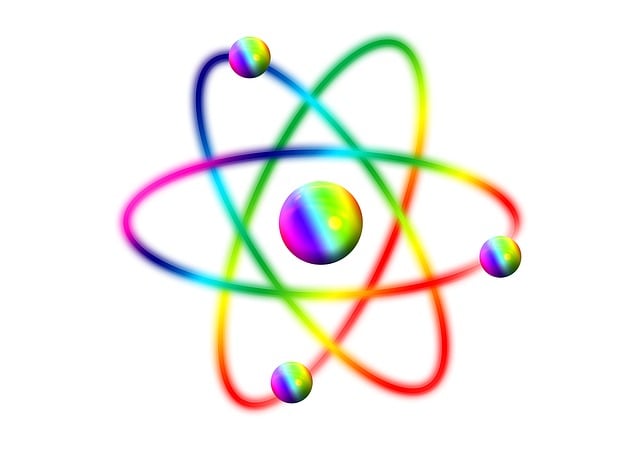Scintigraphy contrast agents, like Fluorodeoxyglucose (FDG), revolutionize cancer diagnosis and management by enhancing PET/CT scans' accuracy and sensitivity. These agents target tumors' unique metabolic pathways, allowing radiologists to distinguish benign from malignant lesions, detect metastases, and plan personalized treatment strategies, ultimately improving patient outcomes.
“Unveiling cancer’s intricacies through advanced imaging, PET/CT (Positron Emission Tomography/Computerized Tomography) scans have become indispensable tools in precision oncology. This article delves into the transformative role of scintigraphy contrast agents, enhancing tumor visibility and enabling more accurate cancer diagnoses and staging. By exploring the science behind these agents, their impact on imaging quality, and their contribution to comprehensive cancer management, we highlight how PET/CT contrast improves patient outcomes.”
Understanding PET/CT Scintigraphy and Contrast Agents
PET/CT scintigraphy has emerged as a powerful tool in cancer diagnosis and management due to its ability to visualize metabolic activity within the body. This advanced imaging technique combines positron emission tomography (PET) and computed tomography (CT), providing detailed cross-sectional images of internal organs and tissues. Scintigraphy contrast agents play a pivotal role in enhancing the accuracy and sensitivity of PET/CT scans. These agents are radioactive tracers that are administered to patients, allowing doctors to track specific metabolic processes associated with cancerous cells.
The choice of scintigraphy contrast agent depends on the type of cancer being evaluated and the specific metabolic pathways involved. For example, Fluorodeoxyglucose (FDG), a common PET tracer, is used to assess glucose metabolism, which can indicate tumor activity. Other agents target specific proteins or receptors overexpressed in cancer cells, further refining diagnostic capabilities. By incorporating these contrast agents into PET/CT scans, healthcare professionals gain valuable insights into the extent and behavior of cancer, enabling more precise diagnosis, staging, and treatment planning.
The Role of Contrast in Enhancing Tumor Visibility
The introduction of scintigraphy contrast agents has significantly enhanced tumor visibility in PET/CT scans, playing a pivotal role in cancer diagnosis and staging. These agents are designed to accumulate in tumors due to their unique metabolic properties, allowing radiologists to distinguish between benign and malignant lesions with greater clarity. By improving the signal-to-noise ratio, contrast agents enable more accurate identification of tumor boundaries, size, and location.
This enhanced visualization is particularly beneficial for assessing small or early-stage tumors, where subtle differences in metabolism might otherwise go unnoticed. Scintigraphy contrast agents also facilitate the detection of metastases, lymph node involvement, and vascularization within tumors, providing crucial information for treatment planning and prognostication.
Accurate Cancer Diagnosis: Benefits of Improved Imaging
Accurate cancer diagnosis is a cornerstone in patient care, and PET/CT imaging with scintigraphy contrast agents plays a pivotal role in achieving this goal. These advanced contrast agents allow radiologists to visualize metabolic activity within the body, enabling them to distinguish between benign and malignant tissues. By tracking specific molecular pathways, PET/CT scans can identify cancerous cells and their unique biological characteristics, leading to more precise diagnoses.
This improved imaging capability offers several advantages. It reduces the need for multiple diagnostic tests, minimizes false positives and negatives, and helps tailor treatment plans accordingly. With scintigraphy contrast agents enhancing the accuracy of PET/CT scans, healthcare professionals can make informed decisions, ultimately improving patient outcomes and survival rates.
Staging Cancer with PET/CT: A Comprehensive Approach
Cancer staging is a critical process that involves determining the extent and spread of cancerous cells within the body. Positron emission tomography coupled with computed tomography (PET/CT) offers a comprehensive approach to this task, providing detailed images of both primary tumors and distant metastases. This non-invasive technique utilizes scintigraphy contrast agents, which emit gamma rays upon decay, allowing for precise visualization of metabolic activity in tissues.
By combining functional and anatomical information, PET/CT enables healthcare professionals to make more accurate diagnoses and treatment plans. It can identify small lesions that may be missed by other imaging methods, helping to catch cancer at an early stage. This advanced technology is particularly valuable for various cancer types, including lymphoma, lung cancer, and metastatic disease, where precise staging is crucial for effective patient management.
PET/CT scan technology, coupled with the strategic use of scintigraphy contrast agents, represents a significant advancement in cancer diagnosis and staging. By enhancing tumor visibility, these agents enable radiologists to accurately detect and delineate malignancies at their earliest stages. This not only benefits patients through earlier intervention but also aids in determining the extent of disease spread, guiding treatment planning, and ultimately improving clinical outcomes. Scintigraphy contrast agents play a pivotal role in this process, ensuring more precise and comprehensive cancer management.
